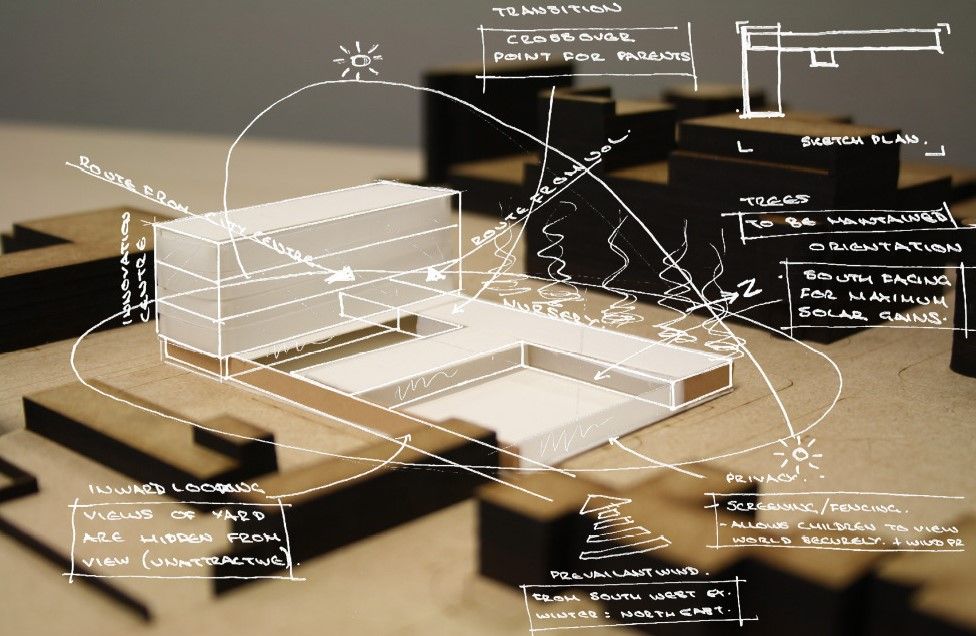Join thousands of people who organise
work and life with Novatr.
How to Give a Fantastic Architecture Thesis Review That Stands Out
Thet Hnin Su Aung
9 mins read
May 08
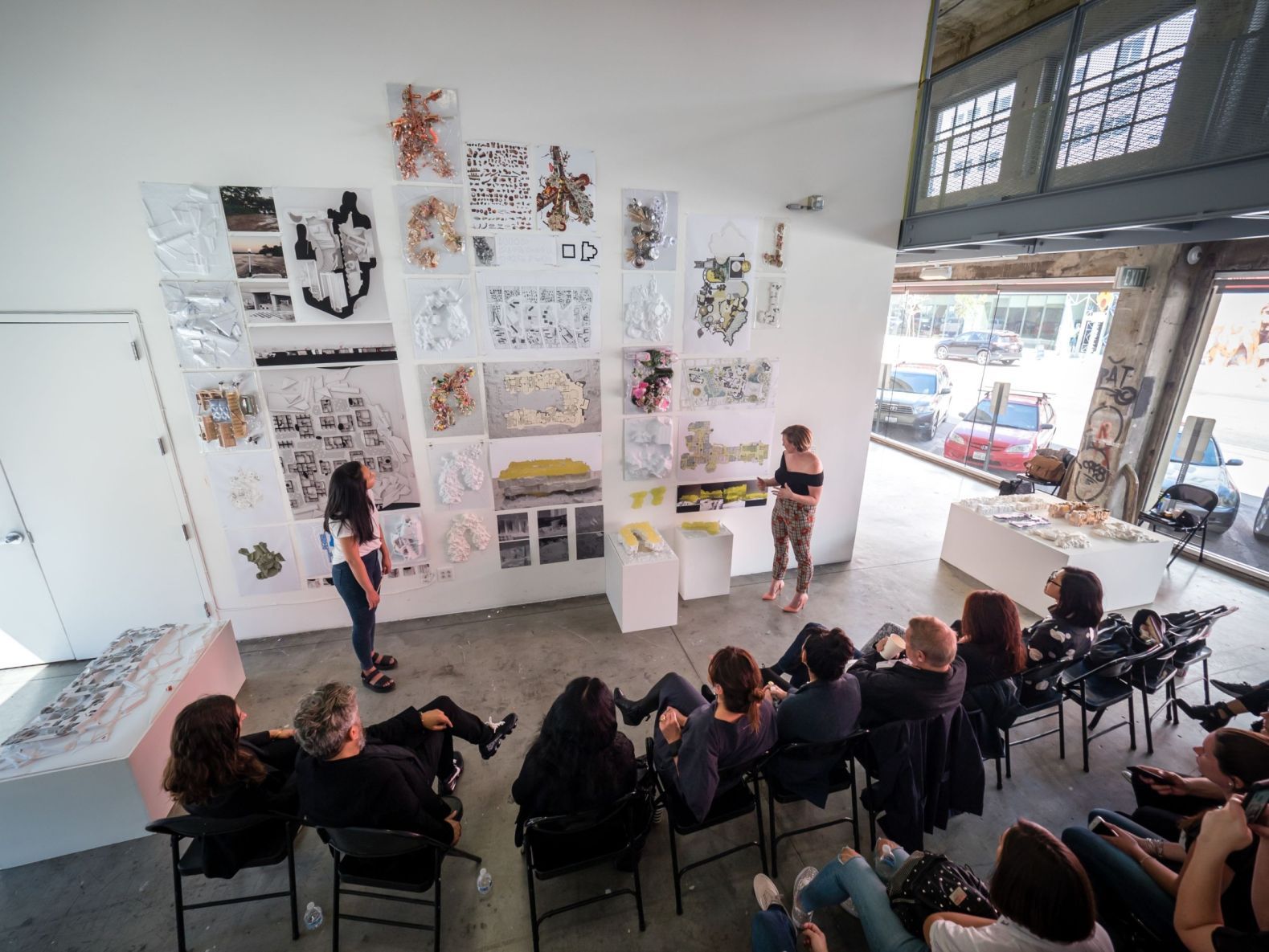
The architecture thesis review includes the design project, submitted drawings and models, and the oral presentation. And so, the verbal presentation is as important as your drawings and models. How should you prepare for it? What elements and steps should you take for a fantastic architectural thesis review? All your answers lie below!

The What-ifs of Architecture Reviews
The architecture thesis review is where the semester work will be judged by a group of jurors (academicians, practising architects and experts) within a period of 20 to 30 minutes. All that research, planning, and designing right from choosing the architecture thesis topic, comes down to this. Many students even dread, unsure of how to write architecture thesis reports.
It is common to worry about the what-ifs - What if I cannot think of what to say? What if I have so much to say? What if I don’t begin it right or don’t finish in time? What if the jurors start losing interest in the middle? SO MANY ‘what ifs’!
We, humans, are bound to get nervous under so much pressure and that can negatively affect the presentation. But if you come prepared, you are less likely to be so. Make planning a habit. Plan, plan and plan. Plan both the drawings and written components well. Plan the presentation boards and the script for the oral presentation well. None of these are standalone components.
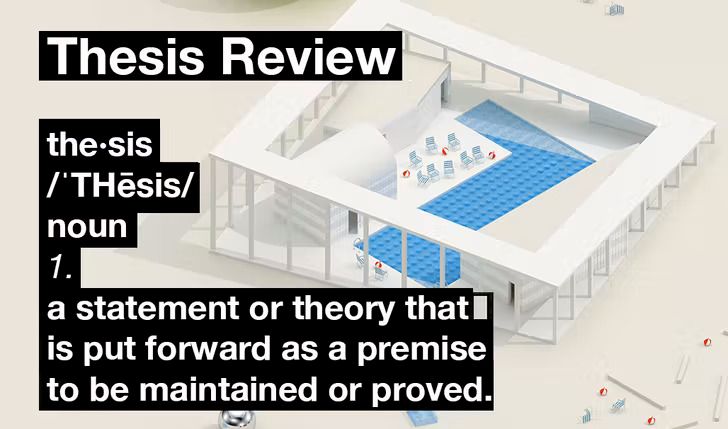
(Source:https://archinect.com/)
Now, let us not worry about the what-ifs and start thinking about a more relevant matter - your final design presentation.
1. Think Storytelling
The architecture thesis review should not be just a condensed presentation of the semester work, nor should it be just an explanation through the drawings - first the plans and sections, then elevations and 3D models. It should be an experience. An experience of the architectural spaces and programmes in the project. An experience of emotions. An experience of imagination. And how do you do that?
Storytelling is the answer.
Think of it as telling a story, like you would do to talk about your day, a trip or even your experiences in the architectural school. All good stories should start with an outline to convey the essence of the story. Outlining a narrative gives a well-planned guide to what should be covered during the review. I say outline because there is no need to write a whole piece and memorise it. It is also possible that you cannot remember with all that nervousness! The outline allows you to plan a cohesive presentation that is concise, clear and time-efficient.
Having a narrative is helpful even in drawings and written components. The presentation board layout can also be arranged such that anyone can get a clear visualisation of what the project is just by looking at it. The visual hierarchy in the entire board should highlight the important elements and with just a glance, you know your steps for the presentation.
2. R, S, T - Relevance, Structure, Time
There are three things to note in a presentation - relevance structure and time. The duration of your verbal presentation may vary from 5 to 20 minutes. Know how long it will be and plan such that within this duration, all the important elements are covered with extra buffer time to accommodate any last-minute additions before the review.
In storytelling, it is crucial to have a good structure. Sometimes, it is a timeline, sometimes it is a sequence of events. When presenting your architecture thesis, think of it as guiding the listener through a series of spaces, like you’re giving directions to a newbie to reach a destination. Since high school, we have been taught about essay structures - introduction, body and conclusion. The same thing can be applied here.
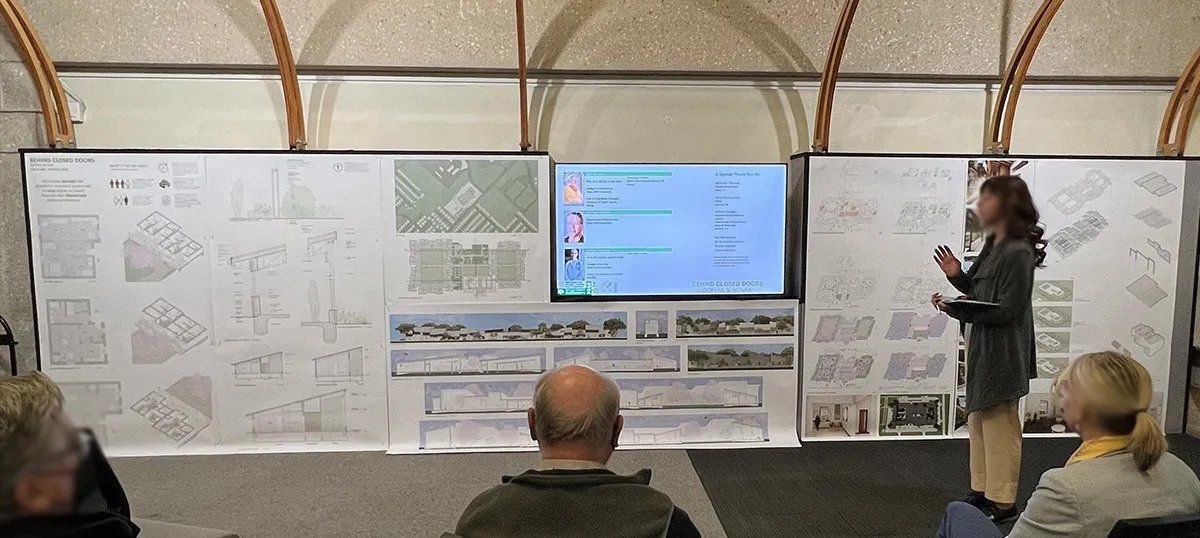
Master thesis presentation, photo by Andrew Hawkins (Source: https://www.lifeofanarchitect.com/)
3. The Overview = The Hook
Begin by giving the introduction or the overview of your project. This is the architecture thesis synopsis. Why was this particular topic chosen? What is the key challenge that is being addressed and what is the design solution that you have come up with? These are some ideas of what to include in the overview. It should not be lengthy. Keep it concise and hook the jurors in with interesting highlights of the project.
4. The Informative Middle
All other information can be extended to the body afterwards. The body or the main section of the presentation is where you talk all about the architecture thesis project. All the research that has been done will aid in this section. However, note that the final design product should not be the sole focus - programmes and design development are equally important. Ideally, your thesis project should address the needs of the users, and the community and aim to solve a real-world design issue. These will be supported by the findings from research and analyses, along with the drawings and models. Present in a clear hierarchy without overlapping points or over-explaining.
Guide the jurors through the architectural spaces, programmes and concepts with only the most relevant details. Drawings and models submitted are more than just a checklist of deliverables set by the professors; they are the visual representation of the thesis. Make full use of them as you follow a narrative and justify your thesis.
5. Concise Conclusion
Conclude the presentation by summarizing what design challenge you have addressed and how the project is contributing to the community. Do keep it concise, like the overview, without further explanation of the design. Remember that these precious few minutes that you will get should be used to discuss your thesis, not to think of a solution or additional ideas on the spot.
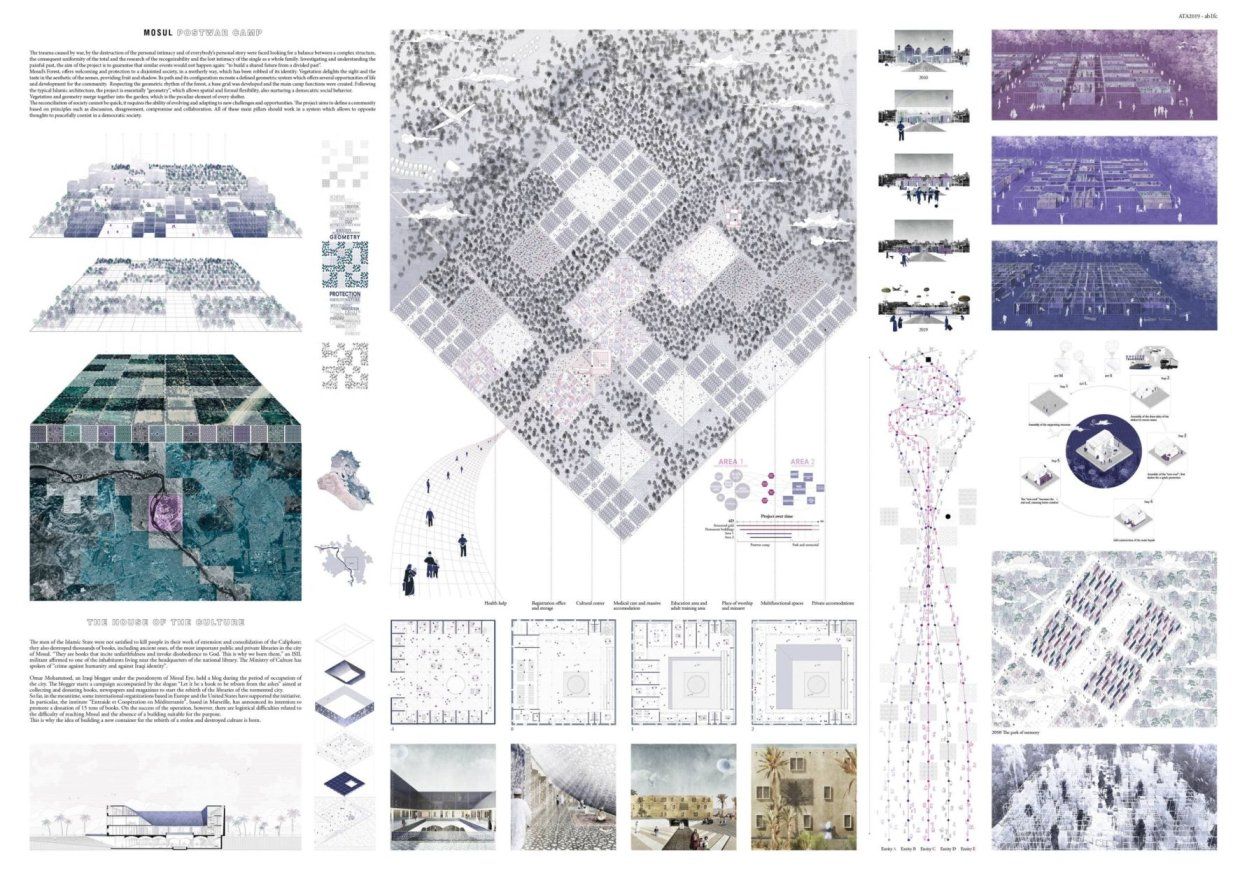
Mosul Postwar Camp Thesis project by Edoardo Daniele Stuggiu and Stefano Lombardi (Source: https://www.archistart.net/)
6. Presentation Boards
Deciding what to include on the presentation board is tricky and will be different from one project to another. It depends on the project brief, deliverables and all the work that has been done in between. Whatever is on the boards should convey your design clearly with or without verbal delivery. Cramming the boards with unnecessary components will overshadow the main design elements. The jurors are only going to look at what is relevant.

Things to Note
• Enhance your vocabulary. Using the right word will have a positive impact on clarity.
• Extract the main essence of your project and weave a good story.
• Use the drawings, models, and even animation videos to your advantage. This ultimately means that every single step of your thesis creation is important, right from topic selection and the initial site analysis.
• Even choosing the architecture thesis topic is a challenging task. Prepare early. The more you rush, the more you are likely to panic and the more you are likely to forget. And last but not least, rehearse extensively!
Finally, dress well and show confidence! You are the one in charge of your architecture thesis project. All the jurors are only responding to what you show and tell. So show them that you have complete control and understanding of your thesis.
Need more help with your architecture thesis project? Use our Architecture Thesis: A-Z guide to help you through this strenuous ordeal. Start early, be well-prepared and have confidence. I have no doubt you will ace this!
Join 100,000 designers who read us every month


